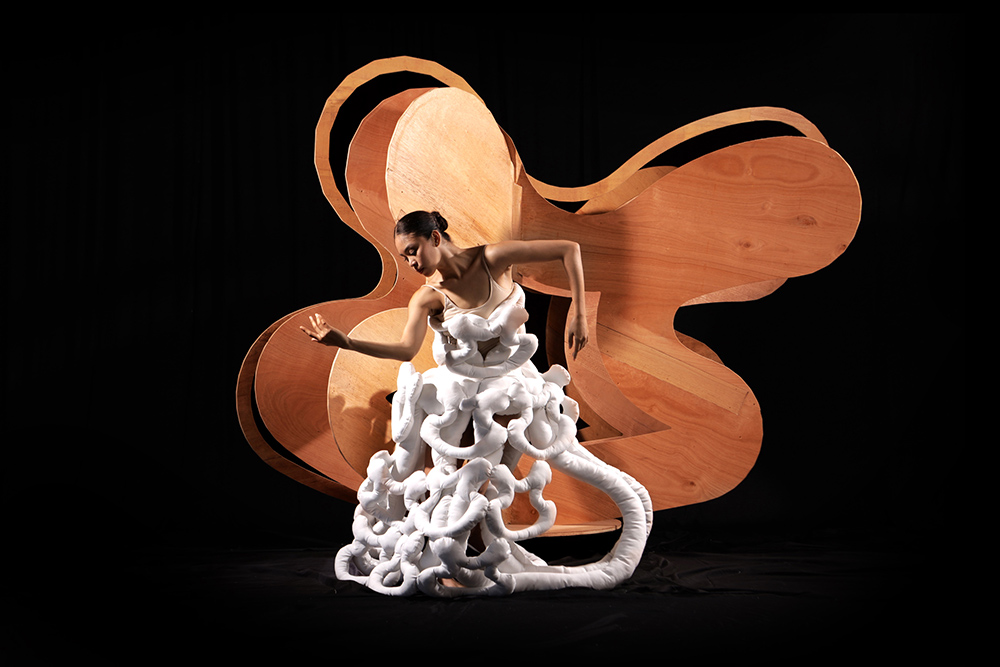Set in the mythical world of Philippine gods and goddesses, Carlo Calma’s DIYOSA is Ballet Philippine’s latest original production that juxtaposes elements from our rich culture with a call to action on the global environmental crisis.
Choreographed by Ballet Philippines’ Artistic Director Mikhail Martynyuk, DIYOSA takes audiences on an unique sensorial journey where dance, design, fashion, electronic music, art come together to inspire future generations. DIYOSA is anything but a literal interpretation of deities from ancient worlds. In the realm created by Carlo Calma, “the gods and goddess are everywhere–in the air, the stratosphere, among the trees, even buildings.”
In the adaptation, Philippine gods and goddesses are characterized through distinctive elements of local life—sunrise in the countryside, crowded alleys, the chorus of tricycles and jeepneys, just to name a few. In interpreting Calma’s concept of modern day deities on stage, Martynyuk shares a precise picture of how every god or goddess moves. He shares, “The concept of gods and goddesses in this ballet is very abstract. In Diyosa, we want to modernize our experience of a god or goddess. So, we had to create a dance for each character. This performance will see a fresh new combination of classical, neo classical and modern dance styles.”
Calma cleverly incorporates the theme of sustainability as a savior throughout his reimagining of these traditional deities. Each segment is told in a dream-like state, and focuses on how each god and goddess can help save our crumbling world. They all represent different sustainable energy sources that can overcome a number of environmental catastrophes. For instance, the portion featuring the GODDESS OF AIR scrutinizes the problem of air pollution, and how wind energy (such as the use of windmills) can minimize the release of carbon emissions. On the other hand, the GODDESS OF MORNING can help overcome the catastrophe of smog with the use of kinetic energy. While the GOD OF SUN highlights the devastation brought to us by drought, it also ties in the idea of solar power as a revolutionary energy source.
The GODDESS OF SEA is no longer a simple serena (or mermaid in English), but a symbol used to comment on the illegal practices of dynamite fishing and coral destruction. The renewable energy source highlighted in this section will be hydropower and ocean energy. On the other end of the spectrum is the GODDESS OF FIRE, who touches upon forest fires and thermal energy. Rounding up the list of abstract mythical beings are the GOD OF MOON (a statement on the darkness of night and tidal energy), the GODDESS OF STARS (tackling long nights and dark atmospheres), and finally, the GODDESS OF EARTH (which examines closely the country’s landfill problem and the use geothermal energy and bioenergy).


